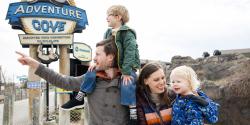The name sloth bear is misleading because this bear is not related to sloths and is not slow-moving like the sloth. In fact, this agile bear can run faster than a human!
It was a European zoologist, George Shaw, who named the sloth bear for its long, thick claws and unusual teeth. He thought that the bear was related to the tree sloth due to these features.
Scientific Name: Melursus ursinus
Conservation Status: Vulnerable
Size: Height ranges from 2 to 3 feet at the shoulder, with a body length between 4 to 6 feet.
Weight: Females range from 110 to 210 pounds and males range between 154 and 320 pounds
Median Life Expectancy: Males: 15.8 years, Females: 17 years













